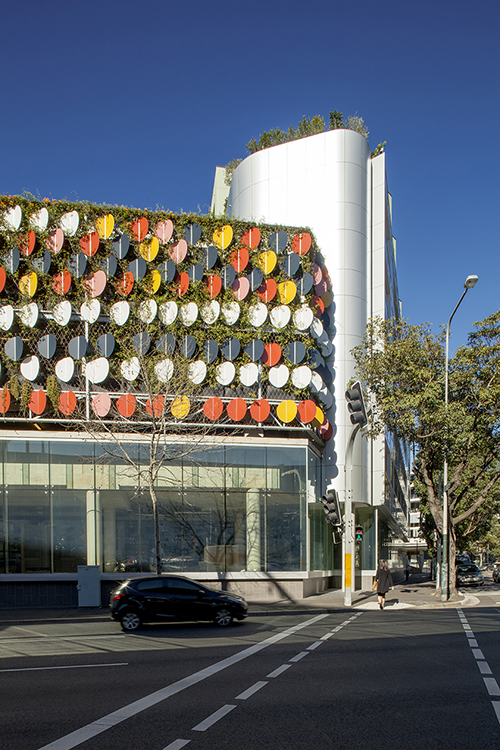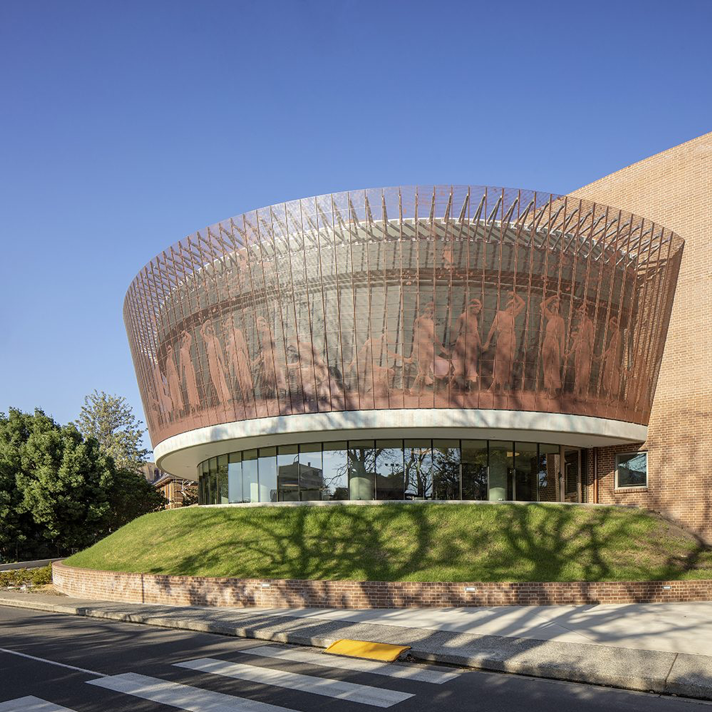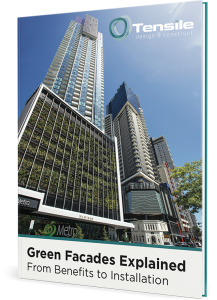Suspended floating facades can add a unique and aesthetic element to your architectural project. These facades can be used to support greenery and artwork, display branding and even convey a story or narrative.
Supported by lightweight and flexible stainless steel mesh or cables, floating facades come with many advantages when compared with conventional facades. These include a faster installation time, low maintenance needs and reduced costs. Mesh and wire rope frames also have the ability to support extremely large and complex geometries and spans, including curves.
Here are some of the reasons to consider steel mesh or wire rope for floating facade frames.
Speedier installations
Facade screens and subframes made from pre-formed mesh such as Webnet or stainless steel wire rope are generally quick to install – often taking only a matter of weeks even for a very large project. This is achieved through the removal of the sub framing that is typically required for perforated or panelled facades.
Lightweight material
While being very strong, stainless steel wire rope and mesh are lightweight materials. Webnet mesh for example weighs only around 300g per square metre. This can make transport and installation easier and less costly than for heavier and dense materials.
Reduced costs
Stainless steel cable or mesh remove the need for a traditional subframe making them a cost-effective alternative. Cables are able to span long distances and work in varied geometries, meaning that they are able to adapt to the base structure integrating the facade and structure.
The reduced sub framing requirements translate into a shorter installation timeframe and less materials when compared to standard facade construction reducing costs for the installation and in turn for the overall project.
Transparency and shape
It’s important the frames for floating facades are as unobtrusive as possible. The idea is that the frame is a supporting act for your facade, but not the star of the show.
Stainless steel wire rope’s thin profile and lightweight characteristics are ideal for creating this kind of effect. The material can also conform to just about any shape, making it a great option for curved facades and complex geometric forms.

Strength, longevity and low maintenance
While being light in weight and appearance, stainless steel support structures are also extremely strong and durable. The material has virtually no maintenance requirements either, which compares favourably with other materials such as glass or mild steel that require constant cleaning.
A floating facade case study
The copper panel facade on the Sibyl Centre at the Sydney University Women’s College demonstrates why architects should consider the use of stainless steel mesh and cable to underpin floating facades.
In this project, over 1,200 perforated copper panels by PerfTech, configured to depict images of the historic Greek figure of Sibyl, are supported by 6mm steel cables in a custom-clamp arrangement. The panels provide a narrative about the ancient prophetess. They also reflect the university’s tradition in the classics and ancient history, as well as its celebration of women’s education.
We designed, engineered, supplied and installed the steel supporting frames. These took less than a week to install by two workers – particularly important given the timeline was a critical factor for the project. Cost was also key, with the subframe coming in at $380 per square metre. This meant we were able to meet two of the client’s main expectations – cost and time.

Prior to installation we used 3D computer modelling to ensure we had the correct geometric curve and a perfect fit for the panels. Combined with tight precision engineering and planning, this meant there was no wastage of material.
The stainless steel cable sub frame provides the unobtrusive floating appearance required to support the copper panels and not impede them in any way. The material also provided the flexibility and malleability needed to make a curved facade, something that would be difficult if not impossible with a more rigid material.
All these elements and factors together led to a speedier and more cost-effective solution – one that created the desired effect of a light, floating, artistic and unique facade.
For further information on floating facades or other facades, don’t hesitate to get in touch with us.





































